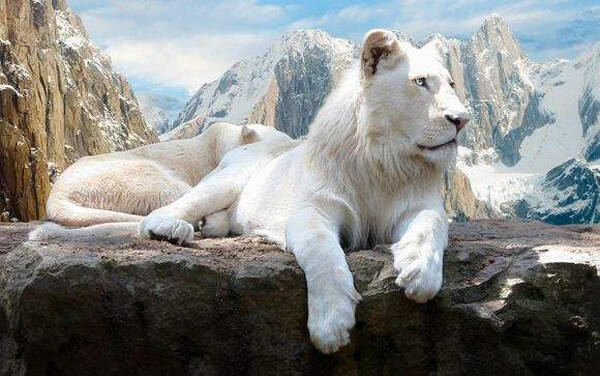Panthera leo krugeri
IUCN
LCBasic Information
Scientific classification
- name:Panthera leo krugeri
- Scientific Name:Panthera leo krugeri,South African Lion,Transvaal Lion, South African Lion, Katanga Lion
- Outline:Carnivora
- Family:Schizopoda Felidae Panthera
Vital signs
- length:2.3-3.2 meters (including tail)
- Weight:120-250kg
- lifetime:15-25 years
Feature
This subspecies has a white variant
Distribution and Habitat
The Kruger lion lives in northeastern Transvaal Province, South Africa, west of the Lebombo Mountains. It borders Zimbabwe and Mozambique. It lives in tropical savannas and grasslands, savannas and semi-deserts, and also appears in shrubs and dry forests.
Appearance
The Kruger lion is similar in appearance and size to lions from other African countries. The total length including the tail is about 2.6-3.2 meters for males and 2.35-2.75 meters for females; the weight of males is 150-250 kg and that of females is 120-182 kg; the height at the shoulder is 0.92-1.23 meters. The average weight of Kruger lions in the Kalahari and Kruger National Parks in South Africa is 187.5-193.3 kg for males and 124.2-139.8 kg for females, respectively. These measurements are greater than the average weight of East African lions. Some specimens of Southwest African lions obtained by museums are described as having manes of varying size, color, and development. A male Kruger lion in the Kgalagadi Transfrontier Park in South Africa has a partially black mane.
The mane is yellow when the lion is young and turns black as it ages. Eventually, the mane will turn dark brown. The body of the Kruger lion is well suited for hunting. The very strong hind legs are designed fo
Details
Kruger Lion (scientific name: Panthera leo krugeri) is also known as South African Lion. It is one of the subspecies of lion. But this subspecies has a white variant, which is also the only white variant of lion. The lions found in and around Kruger National Park in South Africa are Kruger lions. The only recorded white variant belongs to this subspecies. They are found in some wildlife reserves, mainly zoos. The white lion in Kapron Park Zoo is named "Ramses", which means "sunrise".

Lions usually live in groups, with a pride of about 8 to 30 members, with an average of 17. They often include several generations of female lions, at least one adult male lion and some growing lion cubs. Female lions form the core of the lion group, and they rarely leave their birthplace. The lion group contains 2 adult male lions, but there is definitely only one leader. Adult male lions often do not stay with the pride, they have to wander around the territory all year round to defend the entire territory. Generally, they can be the leader of the pride for a few months to a few years, depending on whether they are capable enough to defeat foreign male lions.
Kruger lions are carnivores and often hunt other warm-blooded animals by ambush. Kruger lions have excellent eyesight, good hearing and sense of smell. They also have very fast reaction speed, which allows them to keep up with the agile antelope.
Kruger lions mainly hunt large to medium-sized animals such as giraffes, buffaloes, zebras, wildebeests, wild boars and antelopes. When hunting, when the prey is within about 30 meters of it, the lion begins to run faster. If lions get close enough to their prey, they will grab or slap the animal, usually after knocking it down, then choke it by biting its mouth, nose or throat. Food is usually shared with the entire pride. About a quarter of hunts are successful. Male lions need about 7 kg of meat per day, while females need about 5 kg.
The gestation period of a lionesses is generally 100-119 days, and each may have 1-6 cubs (usually 2-4). The cubs are born with ochre spots, especially on the abdomen and legs. The cubs begin to try to eat meat when they are four weeks old, usually half-digested meat that the mother regurgitates. At the age of 6 or 7 months, they are basically weaned, and the spots on their bodies gradually disappear. However, some guys still have these spots until adulthood, although they are very faint. Children usually grow up with their mothers until about 2 years old, at which time the boys face the serious problem of independence. To reach sexual maturity, females have to be 2-3 years old, and males 5-6 years old.
Since the 1850s to the late 1860s, the lion populations that used to be in Natal and Cape Provinces in South Africa have been extinct in the area. The last lion was found south of the Orange River between 1850 and 1858. Eventually, this lion was moved to Addo Elephant National Park.
In several African lion populations in the southern African country, local communities generate significant income through wildlife tourism, which is a strong motivation to support conservation measures. In 2010, the number of Kruger lions was estimated at 683-1397 in three protected areas: Kgalagadi Transfrontier Park. Kruger National Park has more than 2,000 lions. In June 2015, seven lions were relocated from KwaZulu-Natal in South Africa to Akagera National Park in Rwanda.
Listed in the 2016 IUCN Red List of Threatened Species ver 3.1 - Vulnerable (VU).
Listed in Appendix II of CITES of the Washington Convention.
Protect wildlife and eliminate game.
Maintaining ecological balance is everyone's responsibility!








